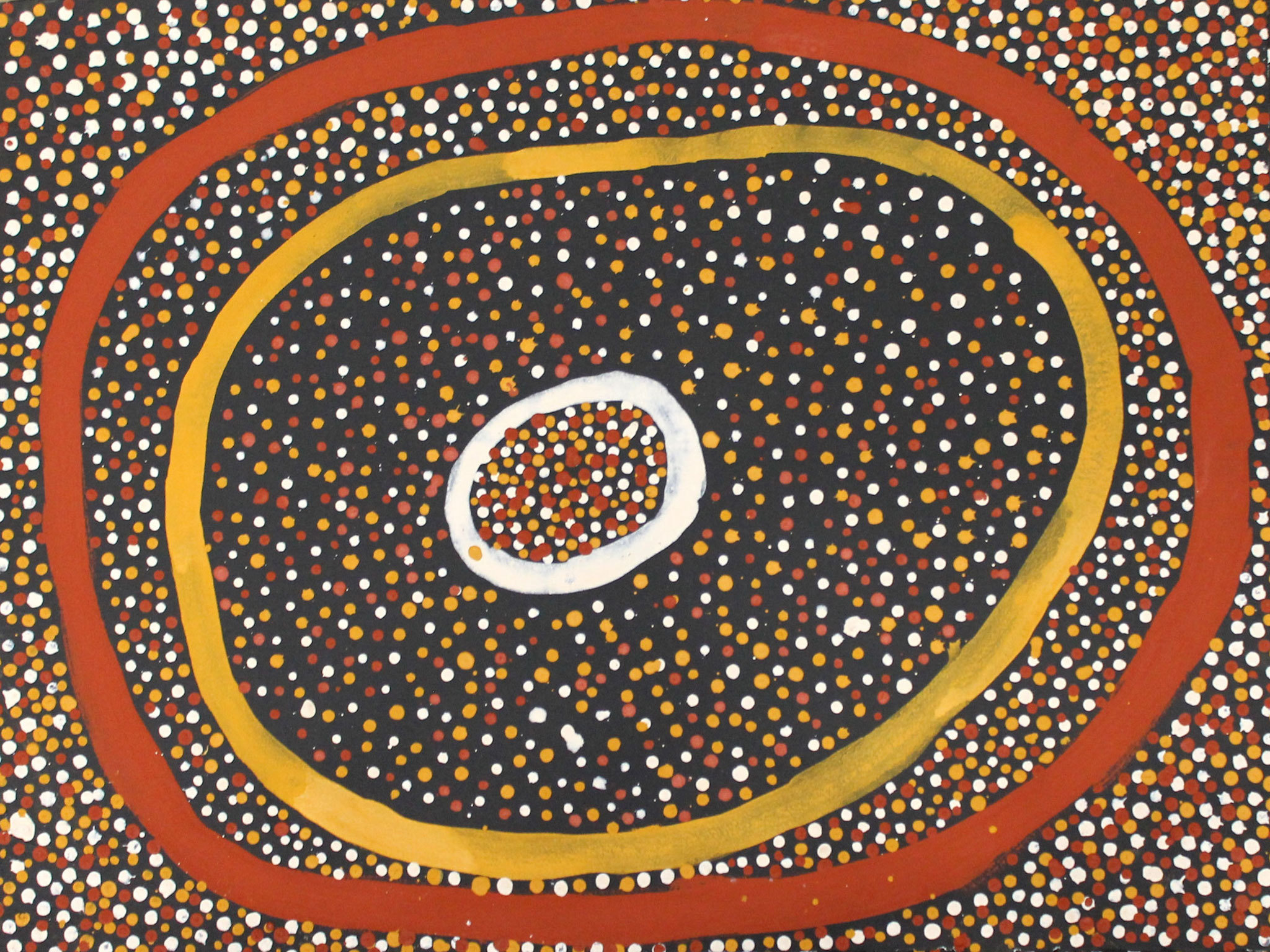 Timothy CookKulama. Natural ochres on linen, 150 x 120cm courtesy the artist and Aboriginal and Pacific Art gallery.
Timothy CookKulama. Natural ochres on linen, 150 x 120cm courtesy the artist and Aboriginal and Pacific Art gallery.
What is the mode of theory promoted by Seeing <—> Making Room for Thought? In other words, what are the operative ideas that are coming from reading the book and trying to piece together the gestalt of the book as a whole. Questions have been following me, like why does it stand out to me as a unique work?
So far I’ve read about half the work. It uses images expertly and they deepen and create a sense of connection between the at times theoretical text and the happenings in the outside world. It gives a feeling of connection to visual culture in the world, distilled down enough that it doesn’t exactly interfere but adds to the quality of the arguments and deepens the sense of history. History viewed solely through text doesn’t bring about the same texture and affect and surface of historicity that comes with bringing along historical images and representations. Bringing forth the visual in this way adds an overall quality to it that is important and reminds me that when making historicized arguments or even references to the past, that it’s important to bring along images to aid with this bringing forth the historical argument/quality. The same could just as well be said of the present. It brings forth provocative questions:
- what are the visual languages of the present (you’re seeking to represent)?
- How does one take a close regard of the detritus of the present to create new constellations? Same for history
- How to map the visual logics of interpretation that act upon how media is used and created in the present?
- How can one create visual historicities that blend present and past? What action does the collision bring forth?
Remember visual reference— begin building it out with seeming detritus of the past and present.